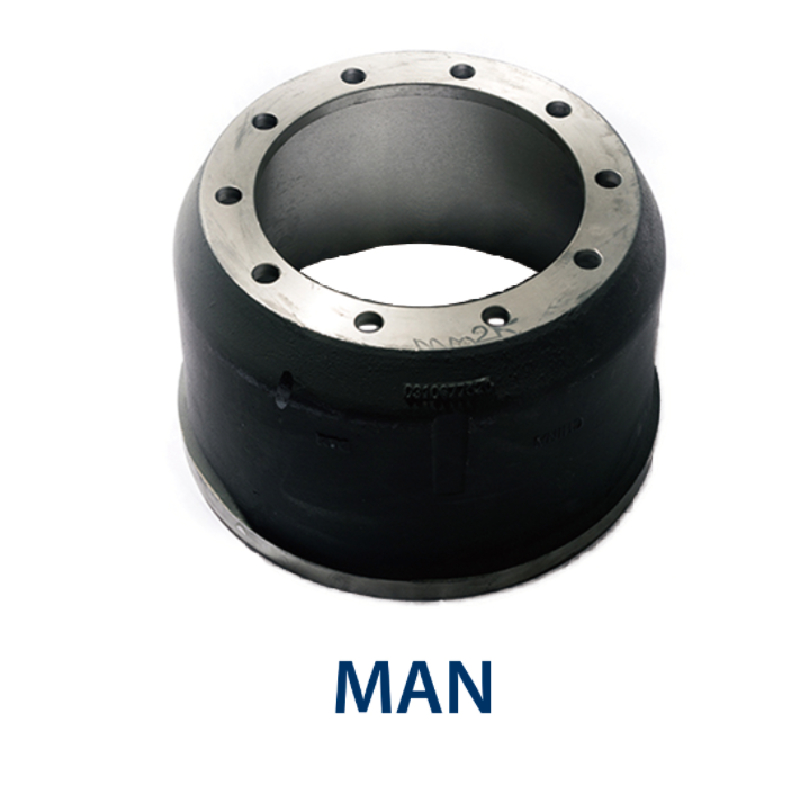Nov . 18, 2024 10:29 Back to list
Balancing Techniques for Brake Drums Enhancing Performance and Safety in Automotive Applications
Brake Drum Balancing Ensuring Safety and Performance
Brake systems are crucial to the overall safety and performance of any vehicle. Among the various components that comprise these systems, brake drums play a significant role, particularly in vehicles equipped with drum brakes. Properly balanced brake drums are essential not only for effective braking but also for ensuring the longevity of the brake components and improving overall driving comfort. This article will explore the importance of brake drum balancing, the methodologies employed, and the implications of neglecting this vital process.
Understanding Brake Drums
Brake drums are cylindrical components that house the brake shoes and are integral to the braking process. When the brake pedal is engaged, the brake shoes expand against the inner surface of the drum, creating friction that slows down the vehicle. Due to the high demands placed on brake drums, they can become warped or unevenly worn over time, leading to several issues if not properly maintained.
Why Balancing Matters
Balancing brake drums is crucial to ensure that they rotate evenly. An unbalanced drum can cause the vehicle to shake or vibrate, especially during braking. This not only affects driver comfort but can also lead to excessive wear on other components, including the tires, suspension, and even the drivetrain. Moreover, an unbalanced drum can reduce the efficiency of the braking system, leading to longer stopping distances and potentially hazardous driving conditions.
Signs of Imbalance
There are several indicators that may suggest a brake drum is out of balance. Drivers might experience vibrations in the steering wheel or seat when braking, a pulsating brake pedal, or uneven brake wear. Additionally, if a vehicle pulls to one side while braking, this may signal a problem with the brake drum, warranting a thorough inspection and potential balancing.
brake drum balancing

Balancing Procedures
The process of balancing brake drums typically involves the use of specialized equipment designed to detect any irregularities. Technicians may employ the following steps
1. Inspection The brake drum is inspected for signs of wear, damage, or warping. This may involve measuring its diameter and checking the surface for any irregularities.
2. Mounting The drum is mounted on a balancing machine that spins it at high speeds to evaluate its balance. Any discrepancies in weight distribution will be revealed during this process.
3. Correction If an imbalance is detected, technicians can correct it by adding or removing material from specific locations on the drum. This process often involves drilling holes or attaching weights to ensure even distribution.
4. Final Testing After corrections are made, the drum is re-tested to confirm that it is properly balanced. This ensures that the vehicle will perform optimally during operation.
Conclusion
In conclusion, brake drum balancing is an essential aspect of vehicle maintenance that should not be overlooked. Regular inspections and maintenance can prevent imbalances and extend the life of the brake system, contributing to enhanced safety and comfort on the road. Drivers should remain vigilant for signs of brake issues and seek professional assistance if they suspect a problem with their brake drums. By prioritizing brake drum balancing, vehicle owners can ensure that their braking systems function effectively, leading to safer journeys and a better overall driving experience. Remember, in the world of automotive safety, every component matters, and proper care can make all the difference.
-
HINO Industrial Solutions - ¡Ң���ຽ��е��������˾ | Advanced Technology&Reliability
NewsJul.13,2025
-
HINO Industrial Efficiency-Jiangsu Hino Industrial|Productivity Optimization&Cost Reduction
NewsJul.12,2025
-
HINO-¡Ң���ຽ��е��������˾|Advanced Industrial Solutions&Energy Efficiency
NewsJul.12,2025
-
Premium Brake Drum Iveco – Durable Drum Brake Drum & Brake Shoe Solutions
NewsJul.08,2025
-
High-Performance Brake Drum Liza for Enhanced Safety Reliable Drum Brake Drum & Brake Shoe Solutions
NewsJul.08,2025
-
High-Quality Brake Drum MAZ – Durable Drum Brake Drum & Brake Drum and Brake Shoe for Optimal Performance
NewsJul.07,2025
